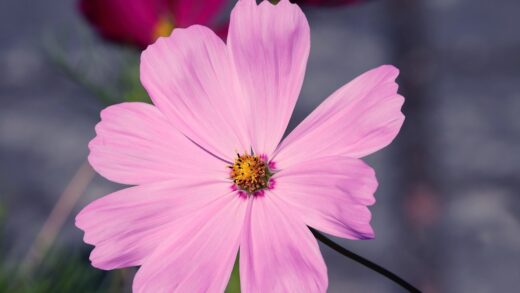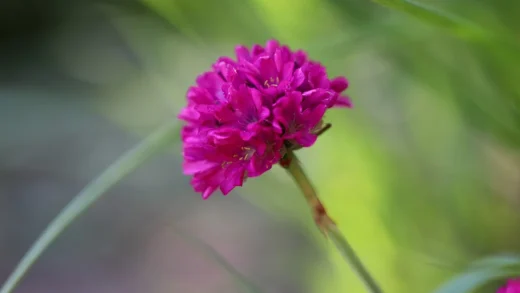Light is the primary source of energy for virtually all plants, driving the fundamental process of photosynthesis that fuels their growth and development. For the laurustinus, providing the correct amount of light is a critical factor in its overall health, influencing everything from the density of its foliage to the profusion of its winter flowers. While it is known for its adaptability, understanding the nuances of its light requirements and placing it in a location that meets its needs will ensure this valuable garden shrub performs to its absolute best. An optimal light environment is the cornerstone of successful cultivation.
The process of photosynthesis is a remarkable biochemical feat in which plants use the energy from sunlight to convert carbon dioxide and water into glucose, a sugar that serves as the plant’s food. This energy is then used to build new tissues, such as leaves, stems, roots, and, importantly for laurustinus, flowers. The amount and quality of light a plant receives directly impacts its photosynthetic rate. Insufficient light leads to a reduction in energy production, resulting in weak, anemic growth and a diminished capacity to flower.
Laurustinus has evolved to be quite versatile in its light tolerance, which is one of the reasons it is such a popular and widely grown shrub. It can grow happily in conditions ranging from full, direct sun for most of the day to significant periods of partial shade. This adaptability allows it to be used in many different garden situations, from a sunny border to a shadier woodland edge. However, there is an ideal balance that will result in the most aesthetically pleasing and floriferous plant.
The specific climate of your region plays a significant role in determining the perfect light exposure. In cooler, more northerly climates with less intense summer sun, a position in full sun is often ideal. This maximizes the amount of light the plant receives, leading to a denser growth habit and the most prolific production of flower buds. Conversely, in hotter, more southerly regions where the summer sun can be scorching, a location that provides some shade, particularly during the hot afternoon hours, is preferable to prevent leaf scorch and reduce heat stress.
Finding the ideal balance
The ideal light exposure for a laurustinus is often described as “full sun to partial shade,” but achieving the perfect balance within that range will yield the best results. For most temperate climates, a position that receives at least six hours of direct sunlight per day is considered optimal. Morning sun is particularly beneficial as it is less intense than the harsh afternoon sun and it helps to quickly dry any dew off the leaves, which can reduce the incidence of fungal diseases.
More articles on this topic
A location that provides sun for the majority of the morning and early afternoon, followed by some dappled or partial shade during the late afternoon, can be considered the gold standard for this shrub. This provides ample light for robust photosynthesis and flower bud formation, while offering some protection during the hottest part of the day when the plant might otherwise be under stress. This is especially true for gardens with sandy soils that dry out quickly or for younger plants that are not yet fully established.
It is also important to consider the changing angle of the sun throughout the seasons. A spot that is in full sun during the summer may be in considerable shade during the winter when the sun is lower in the sky. Since laurustinus flowers during the winter, ensuring it receives adequate light during this period is important for the flowers to open properly and for the plant’s overall health. Observing the light patterns in your garden throughout the year before planting is a worthwhile exercise.
When grown primarily for its foliage as a screening or hedging plant, laurustinus can tolerate more shade than when it is grown as a specimen for its floral display. In heavier shade, the plant will still grow and provide a good evergreen screen, but its habit may become more open and less dense. The most noticeable difference will be a significant reduction in the number of flowers it produces, as flower bud initiation is highly dependent on receiving sufficient light energy during the growing season.
Symptoms of insufficient light
Placing a laurustinus in a location with too little light will result in a number of clear and identifiable symptoms as the plant struggles to produce enough energy to sustain itself. Recognizing these signs early allows you to take corrective action, which usually involves transplanting the shrub to a sunnier location. A plant that is starved of light will never thrive, regardless of how well it is watered or fed, as light is the most fundamental limiting factor for its growth.
More articles on this topic
One of the most obvious signs of inadequate light is etiolation, or what is commonly known as “leggy” growth. The plant will produce long, spindly stems with large gaps between the leaf nodes. This is a survival strategy where the plant is actively stretching and reaching in an attempt to find a better light source. This results in a sparse, open, and often floppy habit that is far from the dense, bushy form that is desired. The overall appearance of the shrub will be weak and thin.
The foliage of a light-deprived laurustinus will also show tell-tale signs. The leaves may be larger than normal but will often be a paler shade of green, lacking the deep, rich color of a healthy, sun-grown specimen. This is because the plant has a lower concentration of chlorophyll in its leaves. In very low light conditions, the plant may also begin to shed its lower and inner leaves, as it cannot afford the energy to maintain foliage that is not contributing significantly to photosynthesis.
The most disappointing symptom for many gardeners is a significant reduction or complete lack of flowering. Flower production is a very energy-intensive process, and a plant that is not receiving enough light will simply not have the surplus energy reserves required to form flower buds. If your laurustinus is healthy in all other respects but consistently fails to bloom, despite being pruned at the correct time of year, insufficient sunlight is the most likely culprit. Moving it to a sunnier spot will often resolve the issue within a season or two.
Effects of excessive light and heat
While laurustinus is a sun-loving plant, there can be too much of a good thing, especially in hot climates or in specific microclimates within a garden that are exposed to intense, reflected heat. When the light intensity is too high, particularly when combined with high temperatures and insufficient moisture, the plant can suffer from stress and physical damage. Providing some relief from the most intense afternoon sun is the key to preventing these issues in warmer regions.
The most common symptom of excessive light and heat stress is leaf scorch. This manifests as brown, dry, and crispy patches on the leaves, particularly along the margins and at the tips. It often appears on the leaves that are most exposed to the direct sun, typically on the south or west side of the shrub. This occurs when the leaves lose water through transpiration faster than the roots can absorb it from the soil, causing the leaf tissues to dry out and die.
In addition to leaf scorch, a plant under constant heat and light stress may exhibit a generally washed-out or bleached appearance. The deep green foliage can become a pale, yellowish-green as the chlorophyll in the leaves begins to break down under the intense solar radiation, a process known as photo-oxidation. The plant’s growth may also be stunted, as it enters a state of conservation to cope with the stressful environmental conditions.
To mitigate the effects of excessive sun exposure, there are several strategies you can employ. The most effective is to choose a planting site that offers some natural afternoon shade from a building, a fence, or a taller tree. If the plant is already in the ground, you can try to improve its resilience by ensuring it is always well-watered during hot periods and by applying a thick layer of organic mulch over the root zone. The mulch helps to keep the soil cool and retain moisture, which reduces the overall stress on the plant.


















